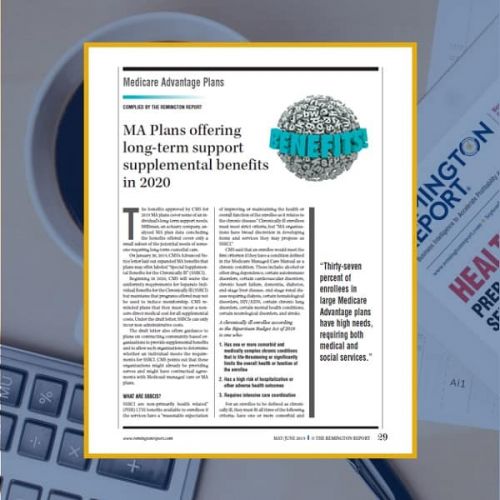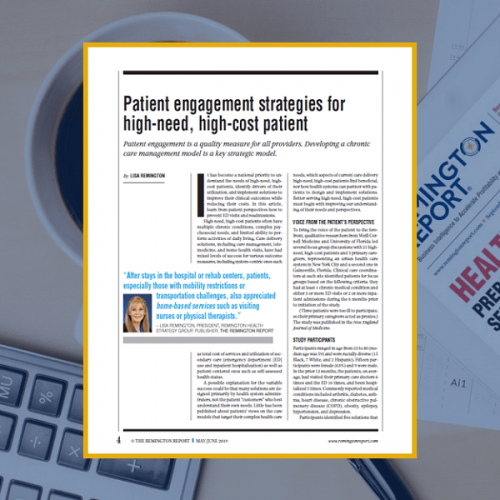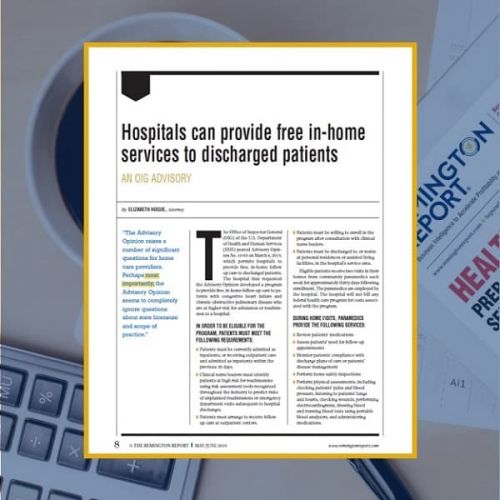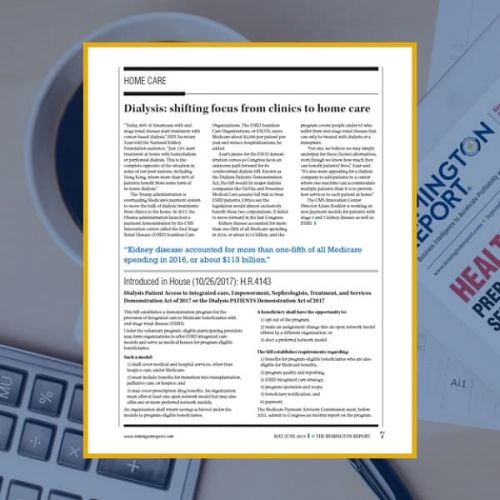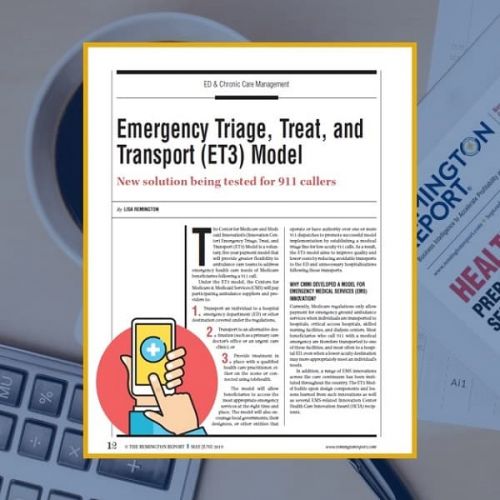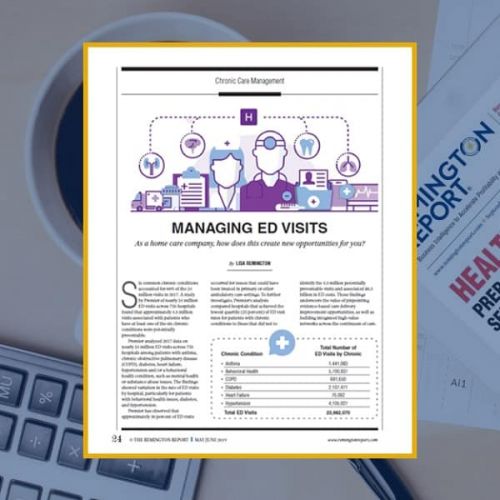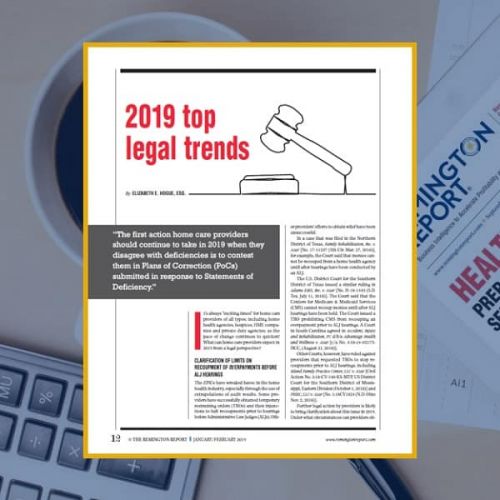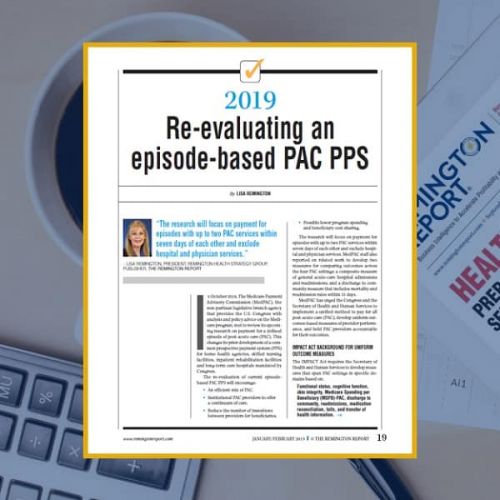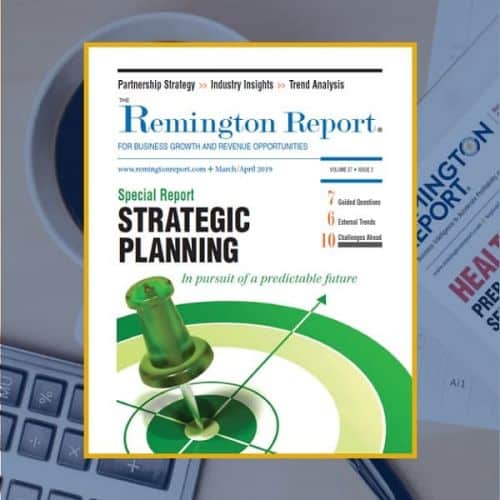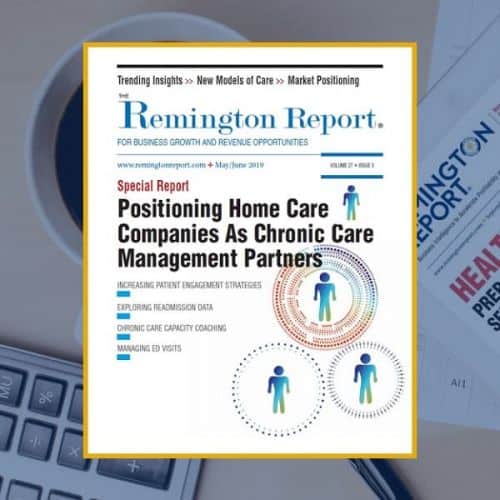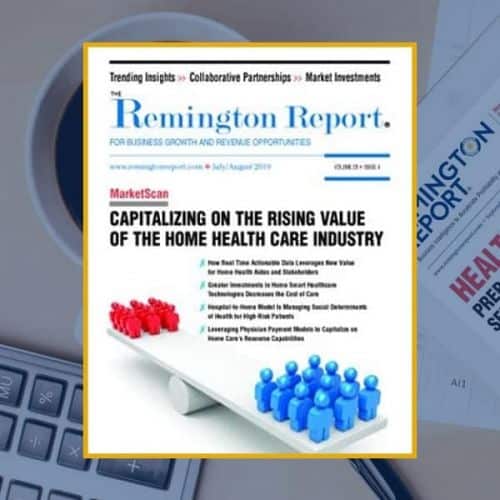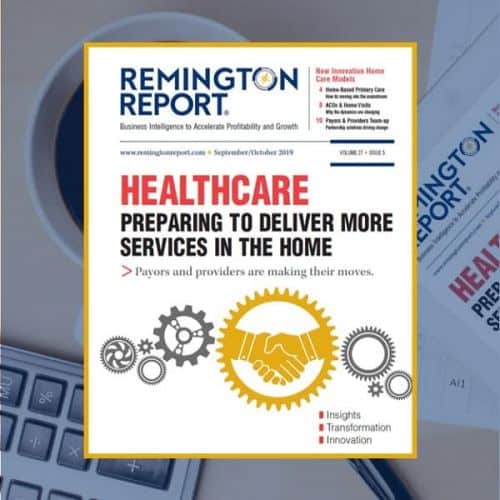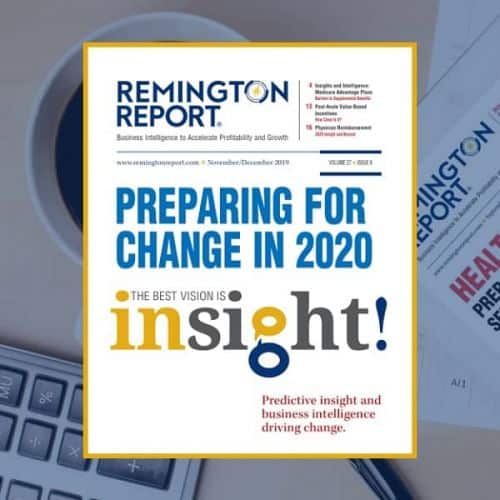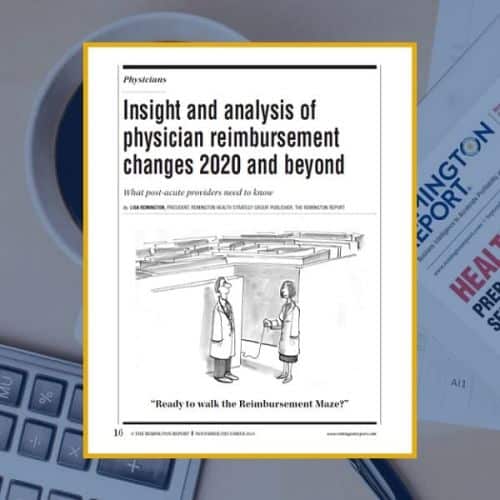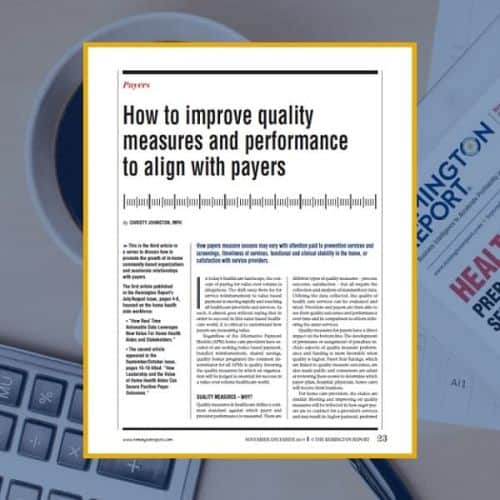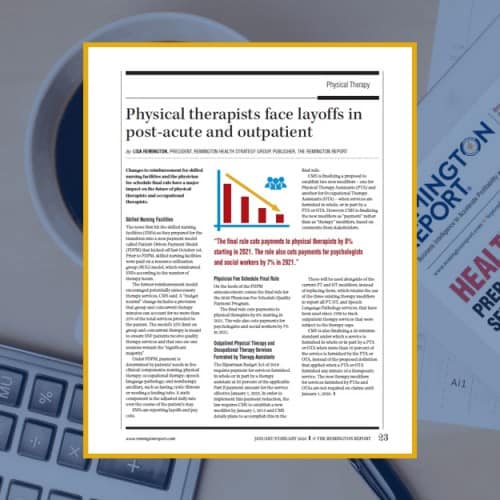-
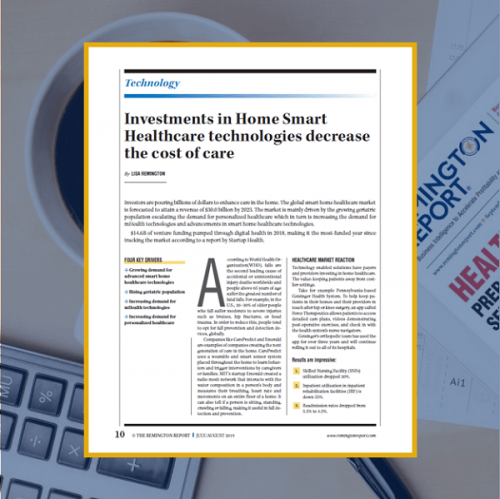 Investors are pouring billions of dollars to enhance care in the home. The global smart home healthcare market is forecasted to attain a revenue of $30.0 billion by 2023. The market is mainly driven by the growing geriatric population escalating the demand for personalized healthcare which in turn is increasing the demand for mHealth technologies and advancements in smart home healthcare technologies. This article is free to 1-Year Classic and 2-Year Premium subscribers.
Investors are pouring billions of dollars to enhance care in the home. The global smart home healthcare market is forecasted to attain a revenue of $30.0 billion by 2023. The market is mainly driven by the growing geriatric population escalating the demand for personalized healthcare which in turn is increasing the demand for mHealth technologies and advancements in smart home healthcare technologies. This article is free to 1-Year Classic and 2-Year Premium subscribers. -
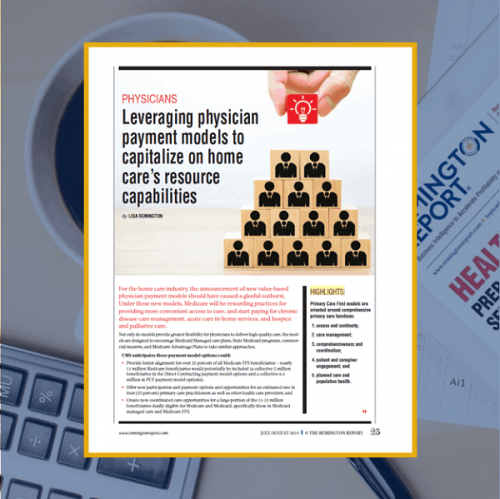 For the home care industry, the announcement of new value-based physician payment models should have caused a gleeful outburst. Under these new models, Medicare will be rewarding practices for providing more convenient access to care, and start paying for chronic disease care management, acute care in-home services, and hospice and palliative care. This article is free to 1-Year Classic and 2-Year Premium subscribers.
For the home care industry, the announcement of new value-based physician payment models should have caused a gleeful outburst. Under these new models, Medicare will be rewarding practices for providing more convenient access to care, and start paying for chronic disease care management, acute care in-home services, and hospice and palliative care. This article is free to 1-Year Classic and 2-Year Premium subscribers. -
 The first two years of the Comprehensive Care for Joint Replacement (CJR) saved Medicare more than?$1,00 per episode. CJR, a five-year Medicare program rolled out in 2016, pays participating?hospitals for hip and knee replacements by episode of care: from admission to 90 days post discharge. This article is free to 1-Year Classic and 2-Year Premium subscribers.
The first two years of the Comprehensive Care for Joint Replacement (CJR) saved Medicare more than?$1,00 per episode. CJR, a five-year Medicare program rolled out in 2016, pays participating?hospitals for hip and knee replacements by episode of care: from admission to 90 days post discharge. This article is free to 1-Year Classic and 2-Year Premium subscribers. -
 The Office of Inspector General (OIG) of the U.S. Department of Health and Human Services (HHS), the primary enforcer of fraud and abuse prohibitions, has issued its annual recommendations that, if implemented, will likely affect HHS programs positively in terms of cost savings, program effectiveness and efficiency, and public health and safety. This article is free to 1-Year Classic and 2-Year Premium subscribers.
The Office of Inspector General (OIG) of the U.S. Department of Health and Human Services (HHS), the primary enforcer of fraud and abuse prohibitions, has issued its annual recommendations that, if implemented, will likely affect HHS programs positively in terms of cost savings, program effectiveness and efficiency, and public health and safety. This article is free to 1-Year Classic and 2-Year Premium subscribers. -
 This is the second article in series to discuss how to promote the growth of in-home community-based organizations and accelerate relationships with payers. The first article published in The Remington Report's July/August issue, pages 4-8, focused on the home health aide workforce: How Real Time Actionable Data Leverages New Value For Home Health Aides and Stakeholders. This article is free to 1-Year Classic and 2-Year Premium subscribers.
This is the second article in series to discuss how to promote the growth of in-home community-based organizations and accelerate relationships with payers. The first article published in The Remington Report's July/August issue, pages 4-8, focused on the home health aide workforce: How Real Time Actionable Data Leverages New Value For Home Health Aides and Stakeholders. This article is free to 1-Year Classic and 2-Year Premium subscribers. -
 Aggressive moves by payers teaming up with big players such as CVS are advancing their healthcare programs into the home. How does this impact healthcare organizations? Are these new partnering opportunities or, a new competitor on the horizon? This article is free to 1-Year Classic and 2-Year Premium subscribers.
Aggressive moves by payers teaming up with big players such as CVS are advancing their healthcare programs into the home. How does this impact healthcare organizations? Are these new partnering opportunities or, a new competitor on the horizon? This article is free to 1-Year Classic and 2-Year Premium subscribers. -
 Prior authorizations take time away from patients and interject a third party into the doctor-patient relationship. There are many frustrations with prior authorizations, but the time spent getting payer permission is a common thread among all doctors. The average practice spends more than 15 hours per week total on them. This article is free to 1-Year Classic and 2-Year Premium subscribers.
Prior authorizations take time away from patients and interject a third party into the doctor-patient relationship. There are many frustrations with prior authorizations, but the time spent getting payer permission is a common thread among all doctors. The average practice spends more than 15 hours per week total on them. This article is free to 1-Year Classic and 2-Year Premium subscribers. -
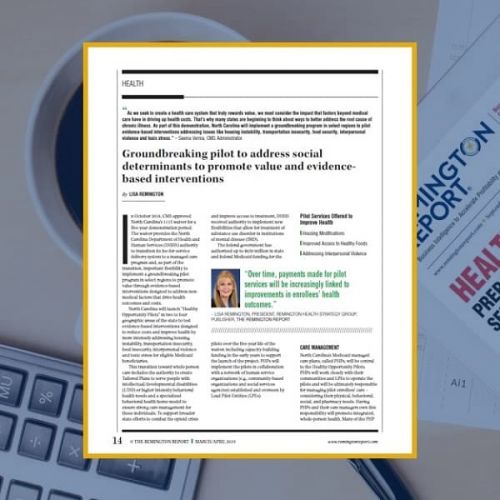 North Carolina will implement a groundbreaking program in select regions to pilot evidence-based interventions addressing issues like housing instability, transportation insecurity, food security, interpersonal violence and toxic stress. This article is free to 1-Year Classic and 2-Year Premium subscribers.
North Carolina will implement a groundbreaking program in select regions to pilot evidence-based interventions addressing issues like housing instability, transportation insecurity, food security, interpersonal violence and toxic stress. This article is free to 1-Year Classic and 2-Year Premium subscribers. -
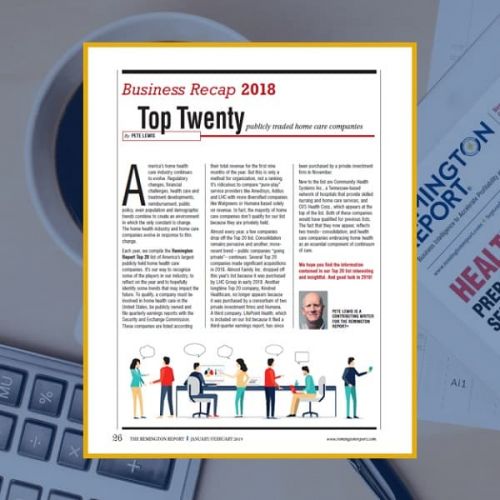 Each year, we compile The Remington Report Top 20 list of America?s largest publicly held home healthcare companies. It?s our way to recognize some of the players in our industry, to reflect on the year and to hopefully identify some trends that may impact the future. This article is free to 1-Year Classic and 2-Year Premium subscribers.
Each year, we compile The Remington Report Top 20 list of America?s largest publicly held home healthcare companies. It?s our way to recognize some of the players in our industry, to reflect on the year and to hopefully identify some trends that may impact the future. This article is free to 1-Year Classic and 2-Year Premium subscribers. -
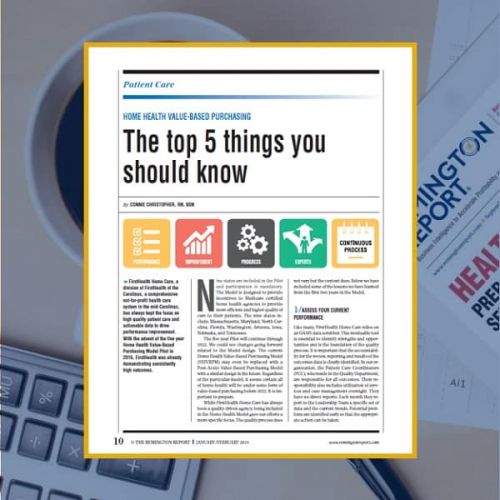 FirstHealth Home Care, a division of FirstHealth of the Carolinas, a comprehensive not-for-profit healthcare system in the mid-Carolinas, has always kept the focus on high quality patient care and actionable data to drive performance improvement. With the advent of the five year Home Health Value-Based Purchasing Model Pilot in 2016, FirstHealth was already demonstrating consistently high outcomes. This article is free to 1-Year Classic and 2-Year Premium subscribers.
FirstHealth Home Care, a division of FirstHealth of the Carolinas, a comprehensive not-for-profit healthcare system in the mid-Carolinas, has always kept the focus on high quality patient care and actionable data to drive performance improvement. With the advent of the five year Home Health Value-Based Purchasing Model Pilot in 2016, FirstHealth was already demonstrating consistently high outcomes. This article is free to 1-Year Classic and 2-Year Premium subscribers. -
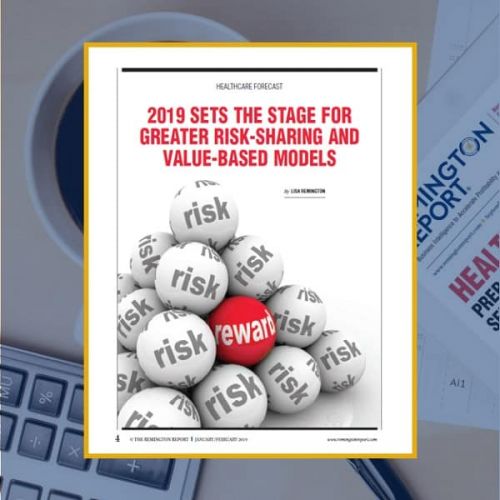 The race to value-based care is heating-up. In today?s healthcare landscape, value-based care is a hodge-podge of models. However, as we track changes to the healthcare infrastructure and payment reform, we see the escalation from fee-for-service models to value-based models supported by an increase in greater risk-sharing models. This article is free to 1-Year Classic and 2-Year Premium subscribers.
The race to value-based care is heating-up. In today?s healthcare landscape, value-based care is a hodge-podge of models. However, as we track changes to the healthcare infrastructure and payment reform, we see the escalation from fee-for-service models to value-based models supported by an increase in greater risk-sharing models. This article is free to 1-Year Classic and 2-Year Premium subscribers. -

This webinar is part of the six-event, on-demand webinar series: Next Generation Home Health Aide Model to Promote Growth and Partnerships
Webinar Summary
A key to targeting interventions begins with the investment in your workforce and data collection. What are the roles and responsibilities of an interdisciplinary team? In this webinar, we identify and discuss successful interdisciplinary team programs, processes, and approaches to build positive outcomes.- Roles and responsibilities of a targeted interdisciplinary team
- Information flow
- Interdisciplinary team case study for high-risk patients
Want to purchase the entire series for $499? Click here.
- Webinar #1: The Changing Healthcare Landscape: The New Role of the Home Health Aides
- Webinar #2: How to Expand Payer Partnerships and Meet Their Goals
- Webinar #3: How to Expand the Role of Aides to be Part of an Interdisciplinary Team Member
- Webinar #4: How to Target Interventions to Improve Outcomes
- Webinar #5: How to Size-up Your Organization for Cultural Change
- Webinar #6: How to Boost Quality Scores and Performance Improvement
-

This webinar is part of the six-event, on-demand webinar series: Next Generation Home Health Aide Model to Promote Growth and Partnerships
Webinar Summary
How can your organization respond effectively to a changing healthcare landscape? One of the key answers is assessing the culture of your organization. In this webinar, we focus on your key asset - your workforce.- How to respond effectively to the changing healthcare landscape
- Engagement and training
- Retention and recruitment strategies
- Strategies to invest in your workforce
Want to purchase the entire series for $499? Click here.
- Webinar #1: The Changing Healthcare Landscape: The New Role of the Home Health Aides
- Webinar #2: How to Expand Payer Partnerships and Meet Their Goals
- Webinar #3: How to Expand the Role of Aides to be Part of an Interdisciplinary Team Member
- Webinar #4: How to Target Interventions to Improve Outcomes
- Webinar #5: How to Size-up Your Organization for Cultural Change
- Webinar #6: How to Boost Quality Scores and Performance Improvement
-

This webinar is part of the six-event, on-demand webinar series: Next Generation Home Health Aide Model to Promote Growth and Partnerships
Webinar Summary
What resources can home care contribute to a successful partnership with payers? The answer: real-time data. Payers are seeking improvements in their quality measure scores to:- Provide better care to their members
- Secure high State/Federal Star Ratings
- Increase funding through better risk adjustment scores
- Qualify to earn quality incentive bonus funding
Want to purchase the entire series for $499? Click here.
- Webinar #1: The Changing Healthcare Landscape: The New Role of the Home Health Aides
- Webinar #2: How to Expand Payer Partnerships and Meet Their Goals
- Webinar #3: How to Expand the Role of Aides to be Part of an Interdisciplinary Team Member
- Webinar #4: How to Target Interventions to Improve Outcomes
- Webinar #5: How to Size-up Your Organization for Cultural Change
- Webinar #6: How to Boost Quality Scores and Performance Improvement
-
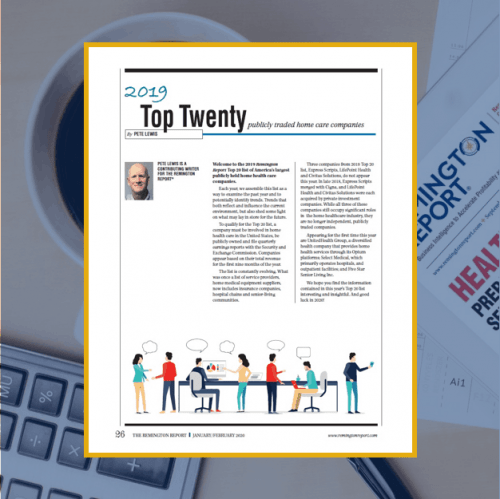 Each year, we assemble this list as a way to examine the past year and to potentially identify trends. Trends that both reflect and influence the current environment, but also shed some light on what may lay in store for the future. This article is free to 1-Year Classic and 2-Year Premium subscribers.
Each year, we assemble this list as a way to examine the past year and to potentially identify trends. Trends that both reflect and influence the current environment, but also shed some light on what may lay in store for the future. This article is free to 1-Year Classic and 2-Year Premium subscribers.
